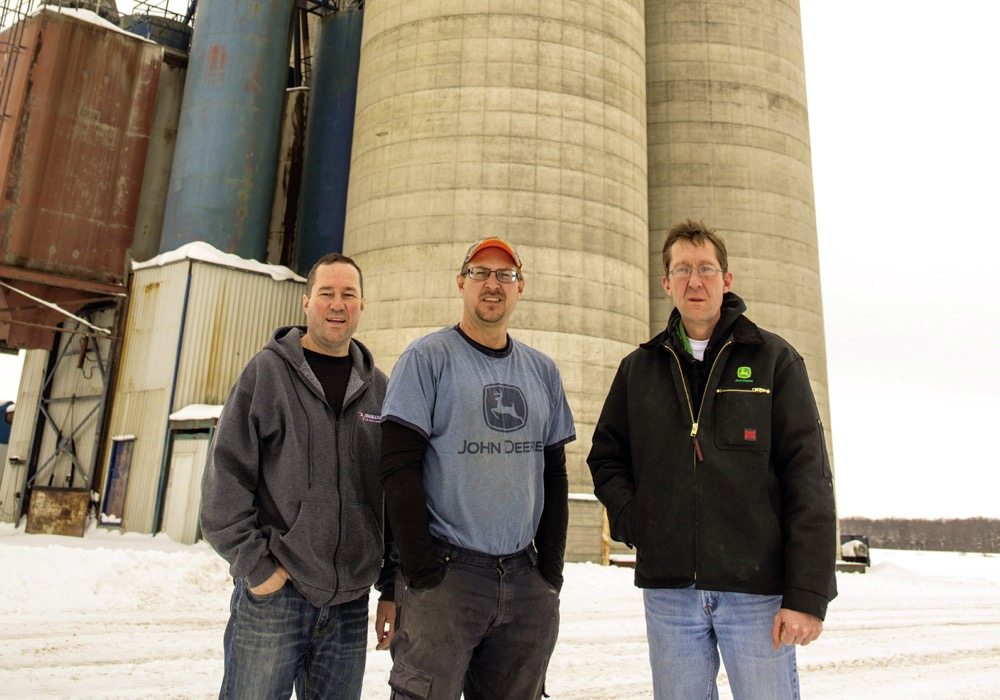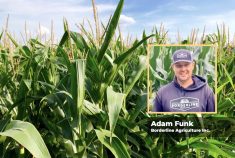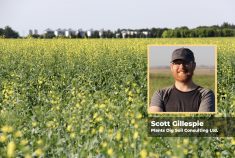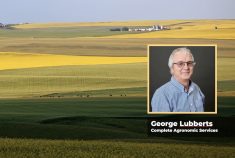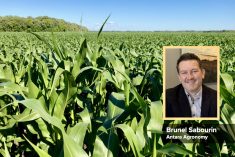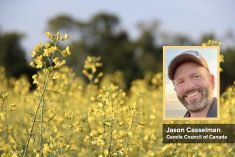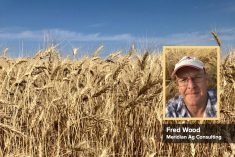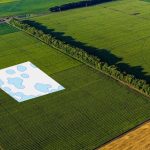Like a lot of farmers, Rick Kootstra doesn’t see himself as an innovator or a leader. He just goes about his business. Thanks to the Ontario Soil Network, though, he does it with a lot of great connections with farmers who share similar goals and aspirations.
Kootstra, along with his brothers Rob and Derek, works the family farm along Highway 4 south of Clinton in Huron County where they grow corn, soybeans, white beans and winter wheat in their rotation.
Kootstra is also well versed in today’s hot-button issues, including consumers’ intense scrutiny of agriculture, and their concerns about food safety. He’s been focusing on such issues for the past four or five years, and for the past two or three has been seeing them surface on his farm.
Read Also

Producers aren’t panicking over tariffs and trade threats
The influence of tariff and trade uncertainity on farm business decisions.
Traceability and sustainability, for instance, started as buzzwords within consumer circles, first landing in hog farming and then in dairy and now poultry.
Today, though, they’re bubbling up in grains and oilseeds.
“It’s taught us that people watch us, and people care, and they’re interested,” says Kootstra. “Our focus is on transparency, and when you enter the cash crop world, I can tell you that from our perspective, we care about neighbours, our friends, our family, our land, our crop, our livestock and our machinery. Farmers are a caring group — period.”
It’s that same mentality that’s developed within the membership of the Ontario Soil Network (OSN), a small group of farmers that’s influenced agriculture in a very positive manner. Kootstra likes that it’s a farmer-led organization, and he sees his membership as a unique opportunity to mix with producers who want to improve on what they do, and who want to leave their land to the next generation in better shape than when they began.
OSN membership is also a sign to consumers and non-farmers that he is being conscientious and thoughtful in his practices, although that kind of signal isn’t really his primary goal.
“Farmers aren’t going to do that because of (consumers), they’re going to be part of this because they love their land — they have a connection to it,” says Kootstra. “And they’ll adapt because it’s a betterment — a financial betterment and a betterment for their little piece of the world.”
Continuous improvement
In a lot of farm circles, the word “innovation” is frequently used to describe change. Kootstra sees it differently.
“What we’ve found is a better way and we’re staying with it,” he says. “On the cropping side, we were in conventional tillage for many years, and five years ago, we switched to strip tillage and no till. We have always had the advantage of a manure source, because of our livestock side. Yet by switching to strip tillage and no till, we’re seeing a gain, with land, on quality, on less erosion, clean water out the tiles, we’re seeing our nutrients stay in place, and we’re doing this for less cost because of fuel savings and fertilizer savings.”
He’s also noticed a slight yield advantage — not that they’re bin-busting, but there’s a definite consistency.
A couple of years after he began strip tilling, Kootstra started expanding his use of cover crops. They’ve grown red clover after winter wheat for as long as he can remember, but they started growing mixtures of oats and cereal rye, fababeans and purple-top turnip, to name a few. Kootstra finds they work to varying degrees, holding nutrients in place and keeping the soil life active. Earthworms and other microbial life have something to eat, and when they’re eating, they’re producing and adding to the soil.
The use of cover crops also underscores two primary goals for Kootstra: to increase water infiltration and to grow soil organic matter. Other targets on that list include reducing fertilizer usage and potential erosion, as well as decreasing reliance on herbicides and fungicides, and trying to keep cover crops in place year-round. He believes cover crops can supply almost all the nutrients his crops need. It’s learning curve, he admits, and it also takes time and effort, but he’s dedicated to it.
“As we go deeper into this system, we discover that our soil is improving, organic matter is rising and we’re having fewer issues with our crop production,” he adds. “Higher organic matter, better soil-water interaction for the plants, less disease on the plants — it’s back to that sustainability angle.”
“So again, back to the soil health side, the approach we take is more sustainable than our previous methods of agriculture,” says Kootstra. “When I say that, strip till, cover crops, no till, they’re far more sustainable.”
Kootstra acknowledges his membership with the OSN has brought him access to a wealth of information and resources. And it also sheds light on a movement that’s a departure away from the “solitude” that’s been a hallmark of farming for decades, although Kootstra insists there’s been more of this type of sharing of information than is often recognized.
A new idea on cover crops
On the family farm, Kootstra has learned to try other methods and practices to help boost crop production. One of those ideas is planting a companion crop, a subtle twist on the whole cover cropping influence. Again, he dismisses the notion that this is innovative, citing its long-term use in other countries and in Western Canada, where growers will plant lentils and canola together.
The concept is that the companion will feed a primary crop. In Kootstra’s case, he uses oats to augment his corn. There’s research from the U.S. to indicate that an oat crop can produce high numbers of arbuscular mycorrhizal fungi that can be utilized by corn that grows with it. He has also mixed fababeans with his wheat seed and planted that blend with the thought that the wheat roots and fababean roots will work symbiotically.
As well, the Kootstras inter-seed and cover crop as often as possible, with the long-term goal of achieving 100 per cent cover cropping on all acres. They also use multi-mix cover crops with as many as 10 to 12 different species; it’s manageable and it’s a huge benefit to their soils and yields.
“I’m fortunate to have been part of the Ontario Soil Network since it started,” says Kootstra. “The whole thing was started to create awareness, and too often, when you went to the farm show or the seed dealer or the equipment dealer, you were alone. Wherever you went, it was you with your ideas, but you were alone. This group puts all of those people together with the same ideas. It’s like-minded people thinking together.”
Kootstra believes in building initiatives such as the OSN’s “Let’s Talk Soil” forum on Twitter as a part of a valuable set of resources. In addition to the OSN’s efforts, he’s also used the “Soil Your Undies” campaign, which started with the Innovative Farmers Association of Ontario (IFAO). Kootstra calls the “Soil Your Undies” campaign an opportunity for growers to gauge their farmland using a type of “soil selfie.”
Regardless of tillage practices, crop rotations or access to nutrients, the process of burying a cotton garment and letting the soil indicate the amount of activity below the surface can be an eye-opener.
“When you pull that out of the ground, I look at the underwear and say, ‘That soil just told me what it looks like’,” says Kootstra
The “Let’s Talk Soil” opportunity on Twitter coincides with the new Soil Health Strategy launched by the Ontario Ministry of Agriculture, Food and Rural Affairs (OMAFRA), and promotes talk among farmers to get more ideas rolling towards making positive changes.
That’s another valuable asset that Kootstra derives from OSN and his membership — a confidence and assurance that farmers are moving in a positive direction.
This article originally appeared in the February 2018 issue of the Soybean Guide.


